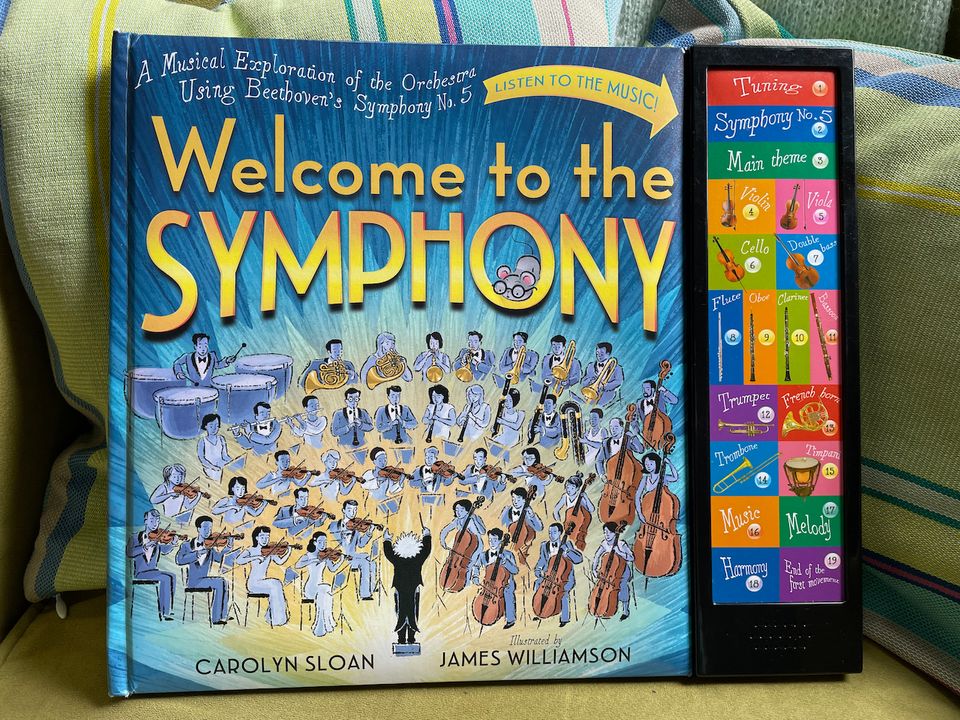'Welcome to the Symphony' Review: An Immersive Introduction to Classical Music for Kids

Welcome to the Symphony: A Musical Exploration of the Orchestra Using Beethoven's Symphony No. 5
By Carolyn Sloan. Illustrated by James Williamson. Workman Publishing Company.
Welcome to the Symphony provides children with a beautiful and immersive introduction to classical music. Using the framework of Ludwig von Beethoven's masterful Symphony No. 5, the book walks the young reader through both the progression of a symphonic concert (entering the concert hall, tuning the instruments, welcoming the conductor, playing the main theme, and so forth) and the range of instruments in each section of the orchestra (strings, woodwinds, brass, and percussion). To provide a rich multisensory experience, the book complements Sloan's prose and Williamson's illustrations with a side panel of buttons representing each instrument and key event in the book that play sounds when pushed.
The book follows three well-dessed mice on their visit to the symphony (one wears a yellow floral fascinator, another a red bowtie, and the third a two-tone turquoise straight tie. The mice ask questions, narrate, and discuss the events of the concert in a playful, relatable way while sidebars on each page provide additional exposition on the mechanics of a symphony and the orchestra that plays it. These notes explain, for example, the role of the conductor, the function of the reed in a woodwind instrument, the history of the French horn, and the concepts of melody and harmony.
Welcome to the Symphony truly shines in the way that it enables multiple levels of interaction and engagement that appeal to children at a variety of ages and in a variety of settings. My daughter and I have enjoyed reading this book ever since she received it as a gift for her third birthday (she is now five years old). Sometimes we have focused primarily on the musical buttons, the search for their numbered cues in the book, and the names of the instruments; at other times, we have focused on the details of the mice, their story, and their antics; and at others, we have focused on the sidebar discussions of the technical details of the music. The book works well both as the foundation for an afternoon of musical play – dramatically waving the conductor's baton while listening to the grander recordings of the Romantic era is a favorite activity – and as a calming read before bedtime.
Sloan and Williamson's charming book would be a perfect gift for a child anywhere between the ages of three and eight years old. It is an elegant introduction to the rich world of classical music, and it affords wonderful opportunities for building on the experience of reading the book with follow-on activities like a ballet dance party in the living room or a family piano lesson.



Comments ()